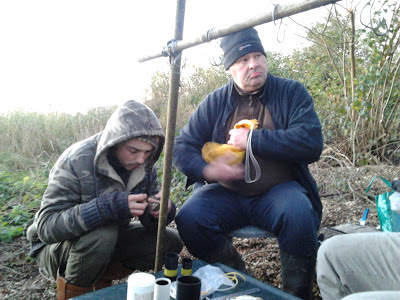We’ve recently heard of some controls; some of ours
going elsewhere and those of others coming to us….
Back in June 2010 6232921, a Sedge Warbler, was caught in Dunes
du Mont St Frieux, Dannes, Pas-de-Calais, France. 284 days later, in May 2012
we caught 6232921 at a sunny Cardiff Bay. Meanwhile the Welsh-French connection was
reversed; we first ringed Reed Warbler X612793 at the bay at the beginning of August 2011. By the beginning of September,
34 days later in fact, the plucky traveller was caught at Braud et Saint
Louis, Gironde, France.
As you may recall, Vaf and Facey headed to Senegal back in
January, while they were there they caught Sedge Warbler 6693961, who had originally been ringed on migration
in Marais de Cap, Montmartin-en-Graignes, Manche, France 159 days
earlier. They also caught DYT538,
a Chiffchaff also ringed on migration in September 2011 but this time in
Blighty, well Icklesham, East Sussex to be precise. This means
that in 2012 Vaf and Facey have dealt with SEDWAs on all three stages of their
life cycle; wintering, breeding and migration. Neat eh?!
| Actually this is not 6693961 but is an actual Sedge Warbler, actually ringed in Senegal. By Vaf actually. |

























.jpg)















